Budgie Testicular Tumor
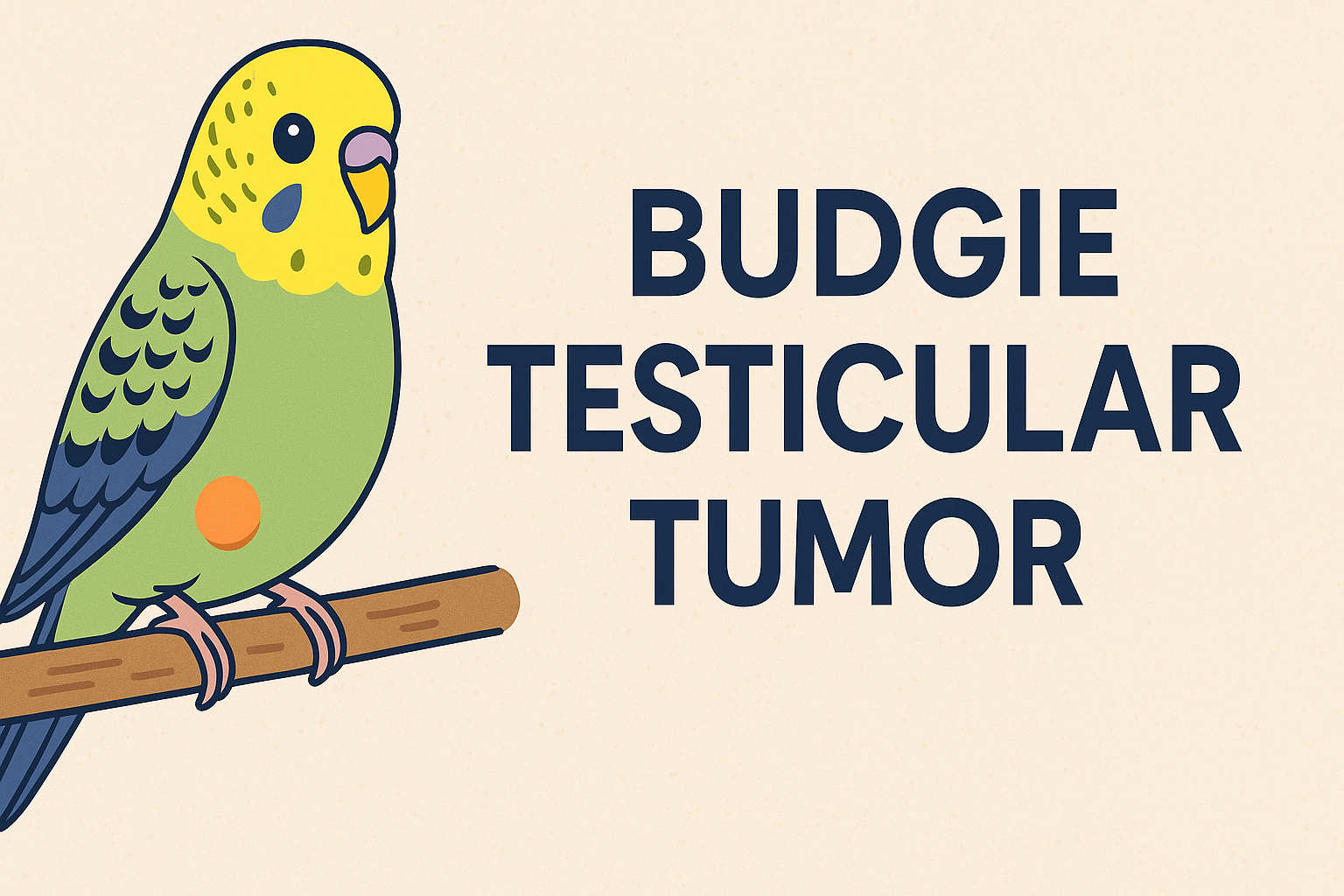
I wanted to share my experience with my budgie, Baden-Baden, and his testicular tumor because I found it incredibly difficult at the time to find clear, relevant information. Most of what I came across came from Facebook or Reddit posts—helpful, but often lacking specific details about what to expect. My goal is to provide a more detailed and personal account of what I’ve gone through, in the hope that it might help others facing a similar situation.
I want to emphasize that this is purely based on my personal experience and may not apply to every case. Nothing in this post should be taken as medical advice. As I’ll also stress in the final section, I strongly recommend seeing a vet as soon as you notice any unusual changes in your budgie. Early action can make all the difference.
August 2024
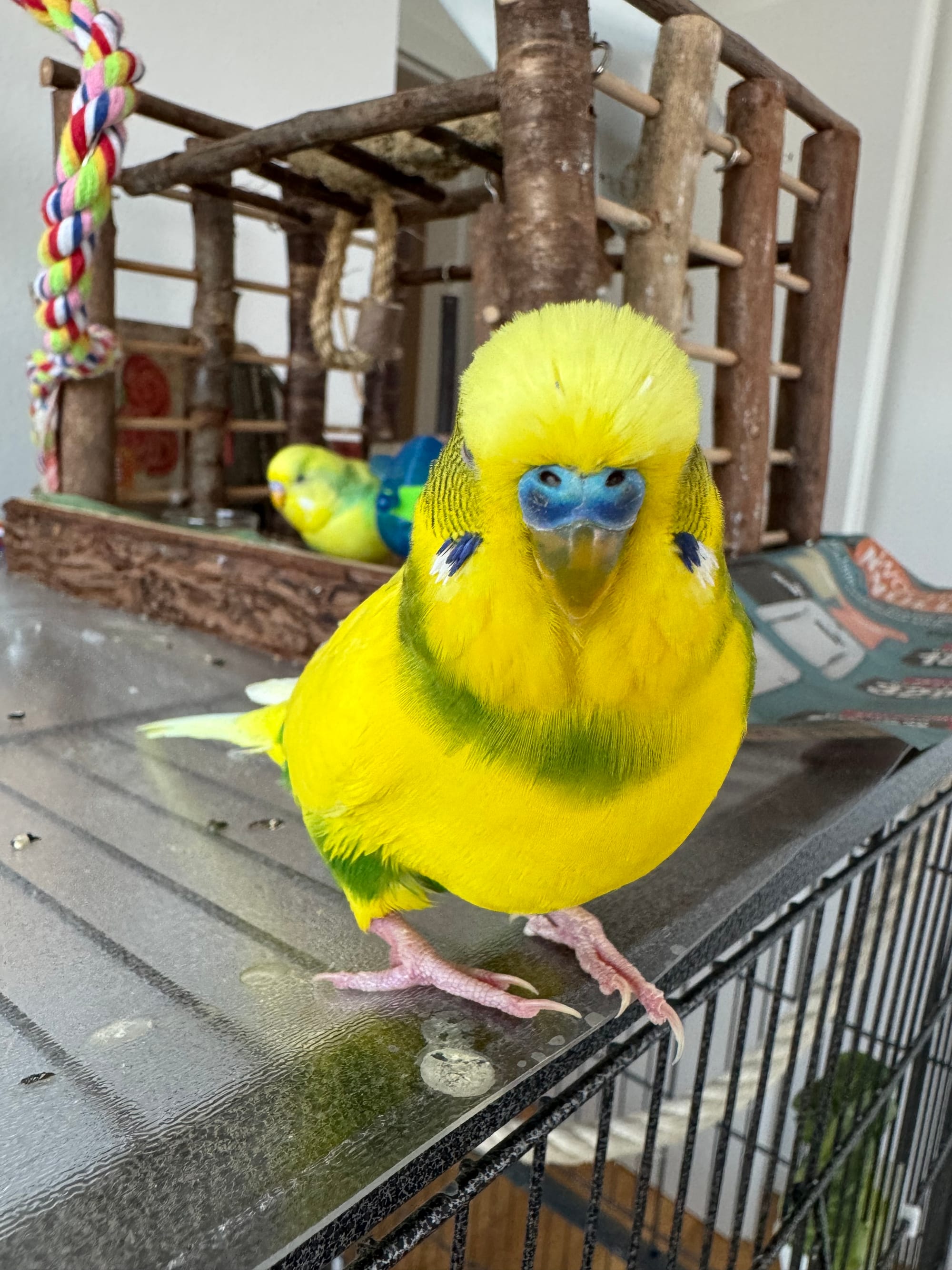
About a month before the symptoms began, Baden-Baden had a bright blue cere. He’s a free-roaming bird who enjoys at least two hours of free flight time each day. He was still on a seed-based diet at the time, though I did offer him fresh vegetables daily. Baden-Baden also had a weight issue we were actively trying to manage.
September 2024
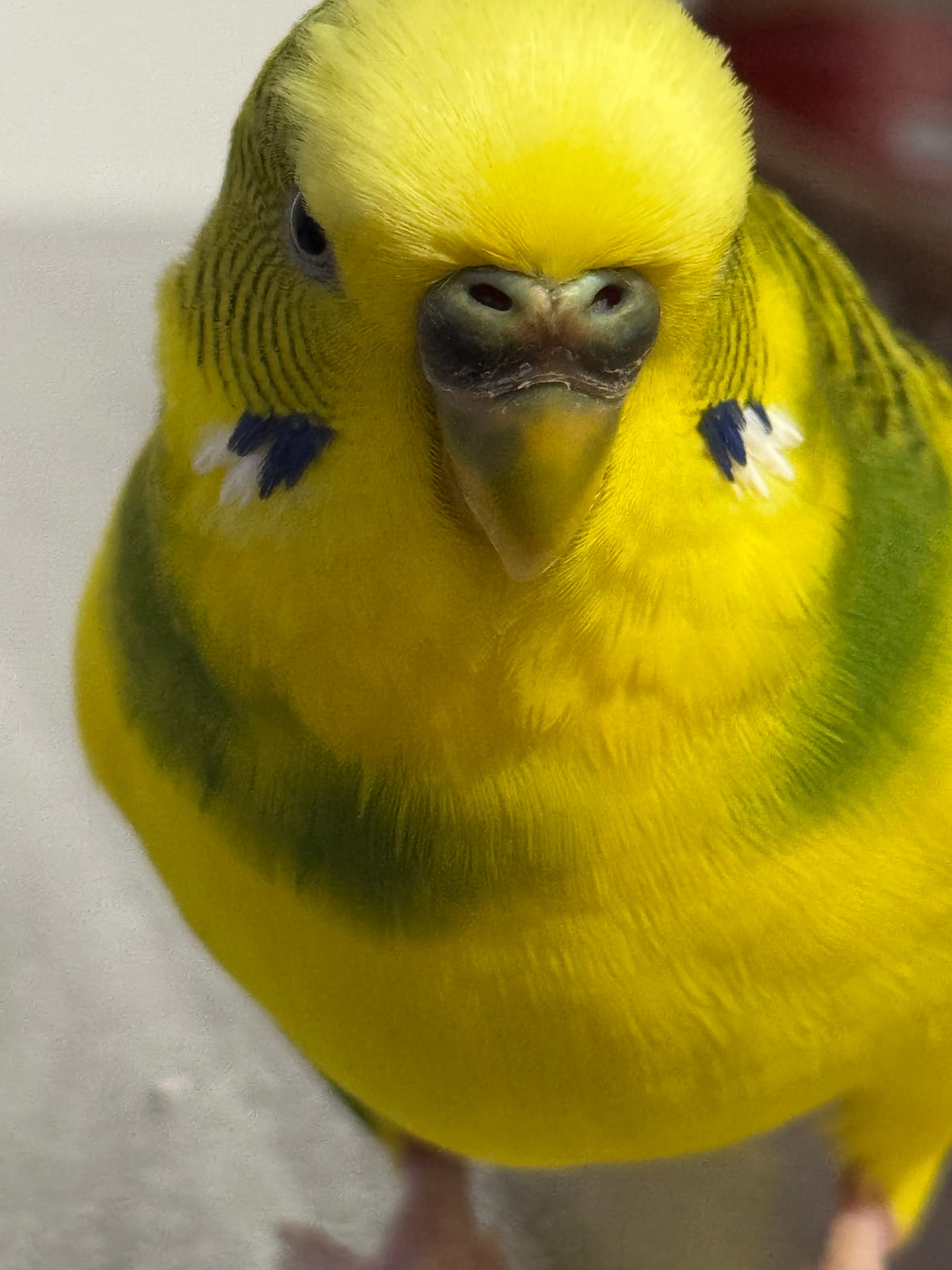
Baden’s cere began turning gray, although he remained very active and showed no noticeable behavioral changes at the time. I came across some Reddit posts—like the one shown below—suggesting that cere discoloration could be linked to an iodine deficiency.
Why did my budgie cere change color
by u/shadow4mkd69 in budgies
Reddit Post Related to Iodine Deficiency
Previously, I had been adding vitamin supplements to his drinking water, but I stopped when I began transitioning him to Harrison’s pellet diet, which explicitly advises against additional supplementation. Still concerned, I decided to offer him iodine-enriched water instead.
October 2024
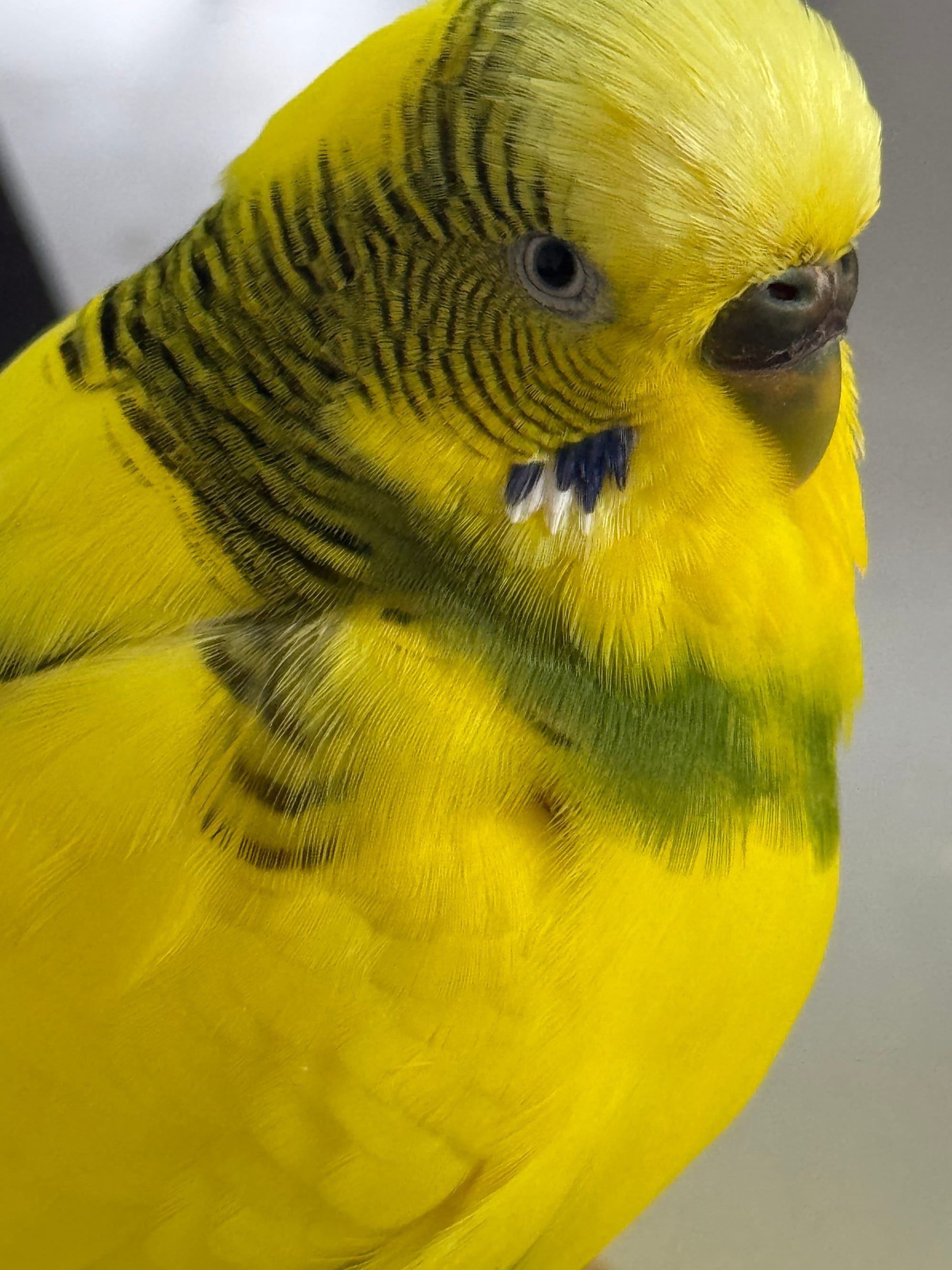
After two weeks with no improvement—and with Baden’s cere turning even grayer—I decided it was time to take him to the vet. Despite the change in appearance, he remained active and playful, showing no behavioral signs of illness. Based on the discoloration of his cere, the vet diagnosed Baden with a testicular tumor.
November to January 2025
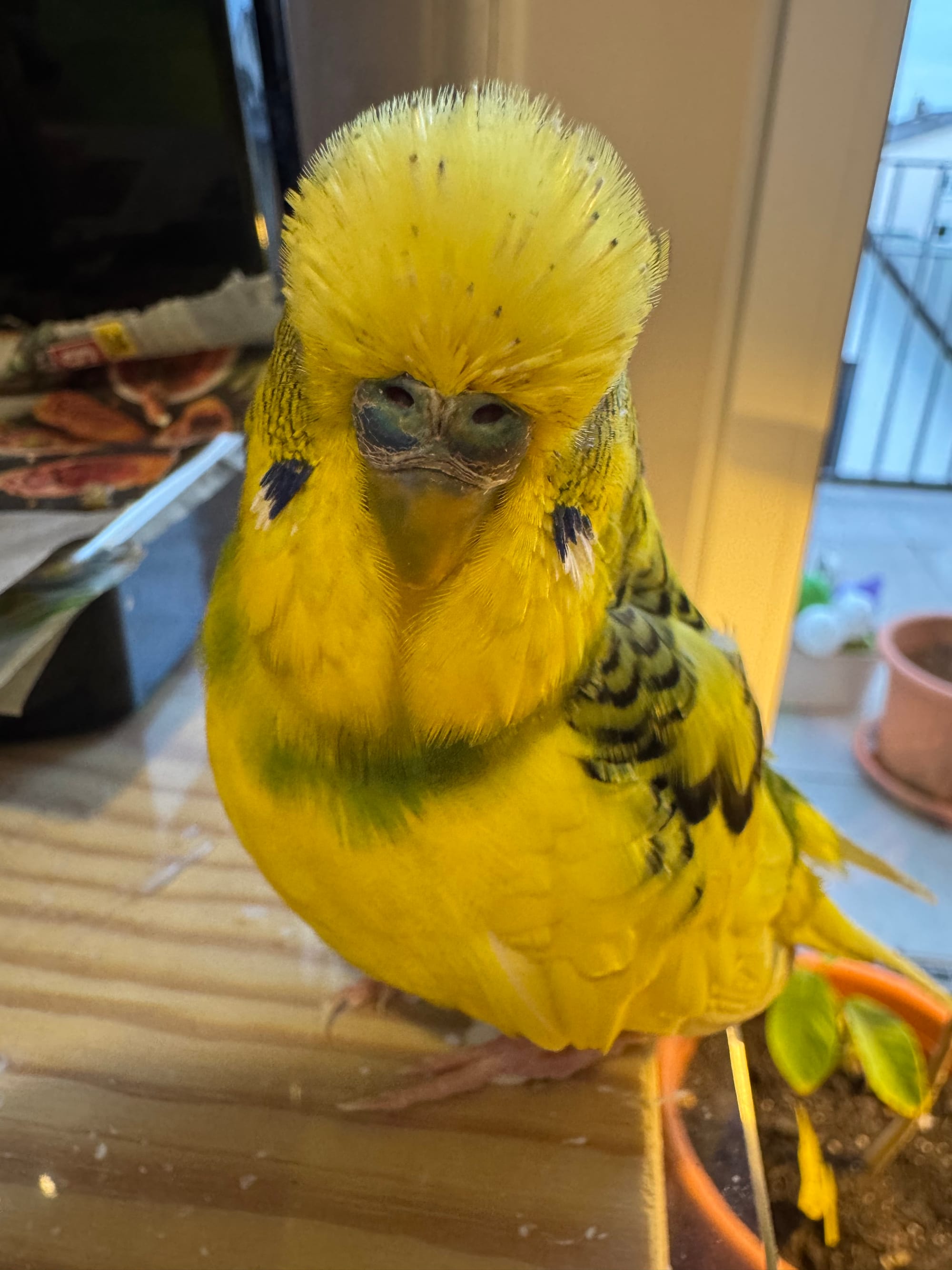
The vet decided to give him Lupron shots every week for 5 weeks straight. After the 5 week treatment, the cere turned slightly better. The vet recommended that we stop giving him shots but unfortunately, the cere turned back to gray after stopping the treatment for 1.5 weeks. We had to go back for weekly shots. (For reference, each vet visit cost around €50, which may be helpful to know if you’re facing a similar situation.)
February to April 2025
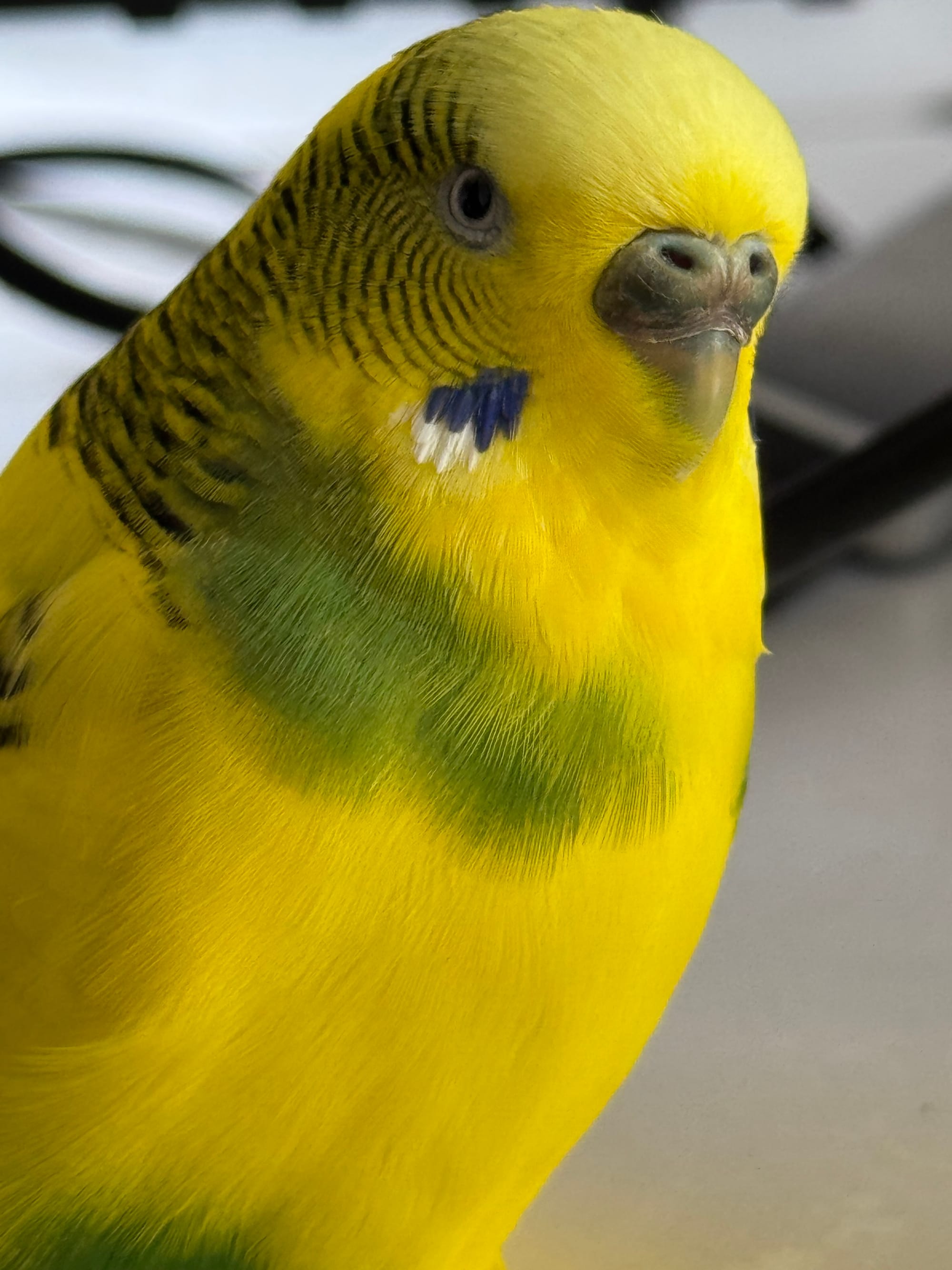
After some time, the Lupron injections from the vet became less effective. While Baden-Baden’s cere didn’t return to the dark gray of the untreated stage, it was still noticeably different from how it looked before the tumor symptoms began. I decided to visit a more advanced avian specialist to have him x-rayed.
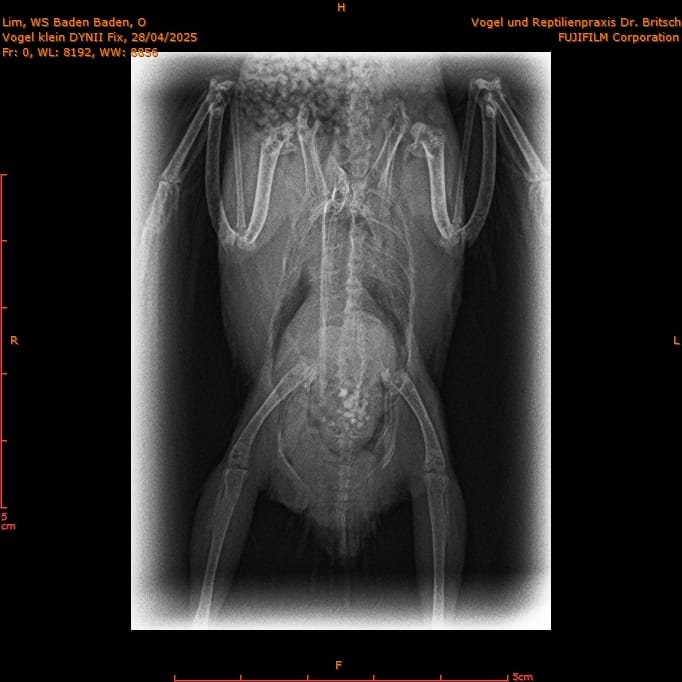
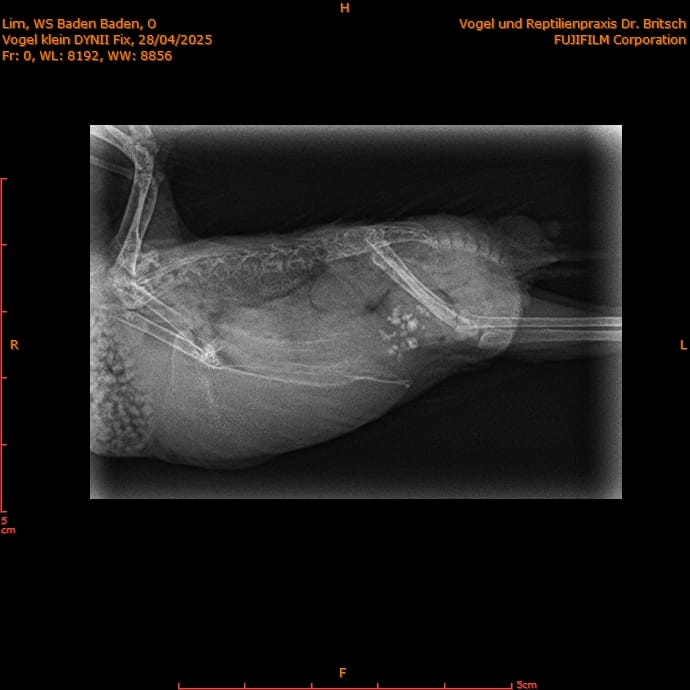
X-rays in budgies can help assess the condition of the testes—one common sign of a tumor is asymmetry, where one testis appears significantly larger than the other. Bone calcification can also support the diagnosis. However, it’s important to note that a testicular tumor can only be 100% confirmed through a biopsy, which carries significant risk in small birds. I was also informed that some vets prefer to sedate budgies for x-rays, but this should be avoided if possible due to the risks of anesthesia in such small animals.
Thankfully, Baden-Baden’s x-rays showed both testes to be normal in size, with no obvious large tumor. There was some bone calcification, which could still suggest the presence of a tumor, but at least it appears that the tumor is not actively growing.
One of the challenges with tumors in budgies is that their internal space is fixed—unlike in humans, their bodies can’t expand to accommodate growths. If a tumor grows, it can compress organs, affect breathing, or even press against the spine, making movement difficult or impossible.
After reviewing the x-rays, the second vet recommended reducing Lupron injections to once a month instead of weekly. Baden was given 0.10 ml of Lupron. Two x-rays were taken, with the total cost around €110.
May to June 2025
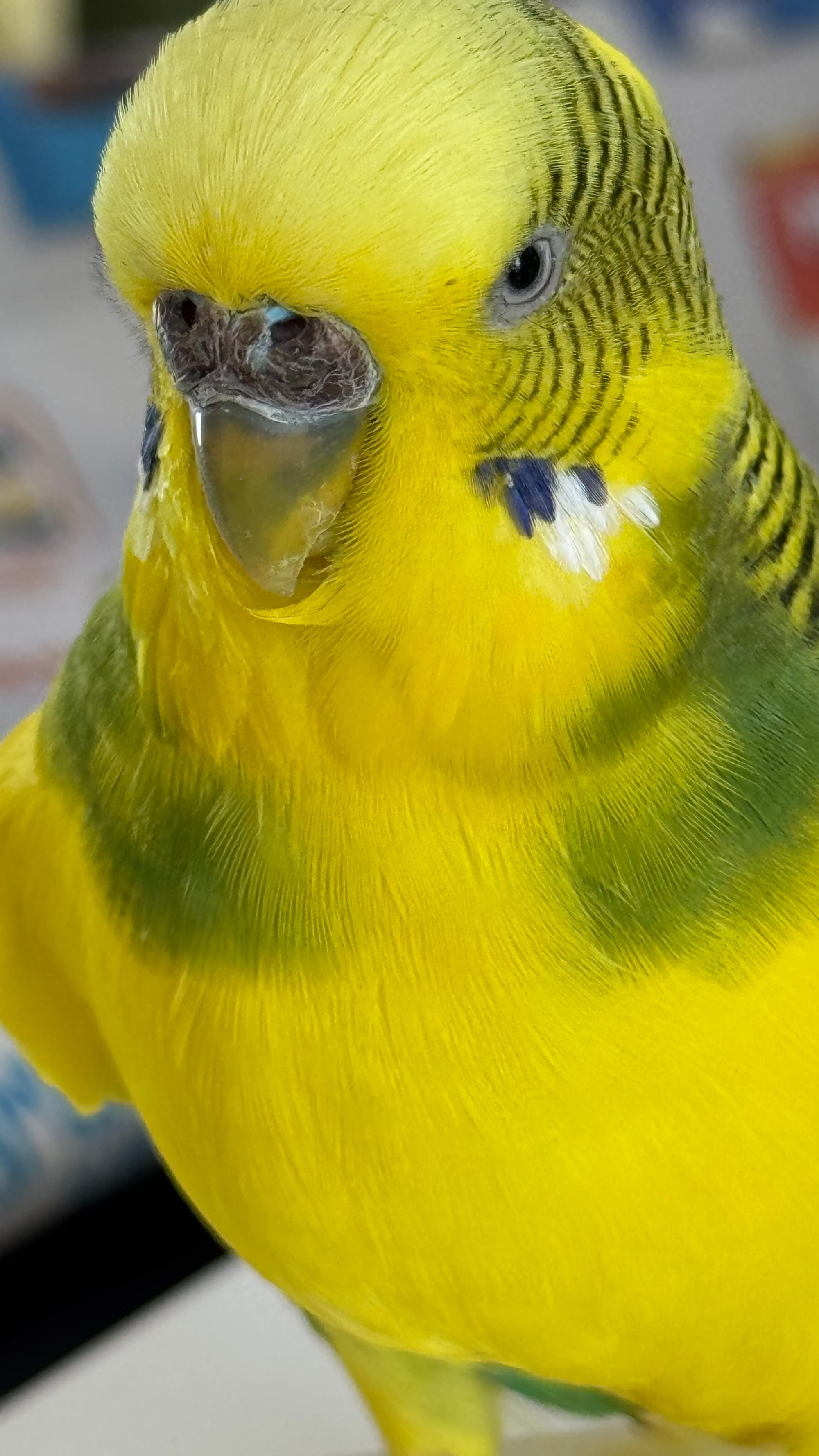
About a month later, we returned to the vet. This time, the vet recommended trying a Suprelorin implant (4.7mg), which is designed to release hormones steadily over the course of three months. Compared to weekly injections, implants are a better long-term option—repeated injections in the chest can eventually cause hardening of the tissue. I had also spoken with someone who had successfully cared for budgies with similar conditions, and he/she spoke positively about using implants. While the procedure carries some risk, the potential benefits often outweigh them. Of course, this is something that needs to be evaluated on a case-by-case basis. In Baden’s case, because he remained healthy and showed no behavioral changes, the vet felt confident moving forward.
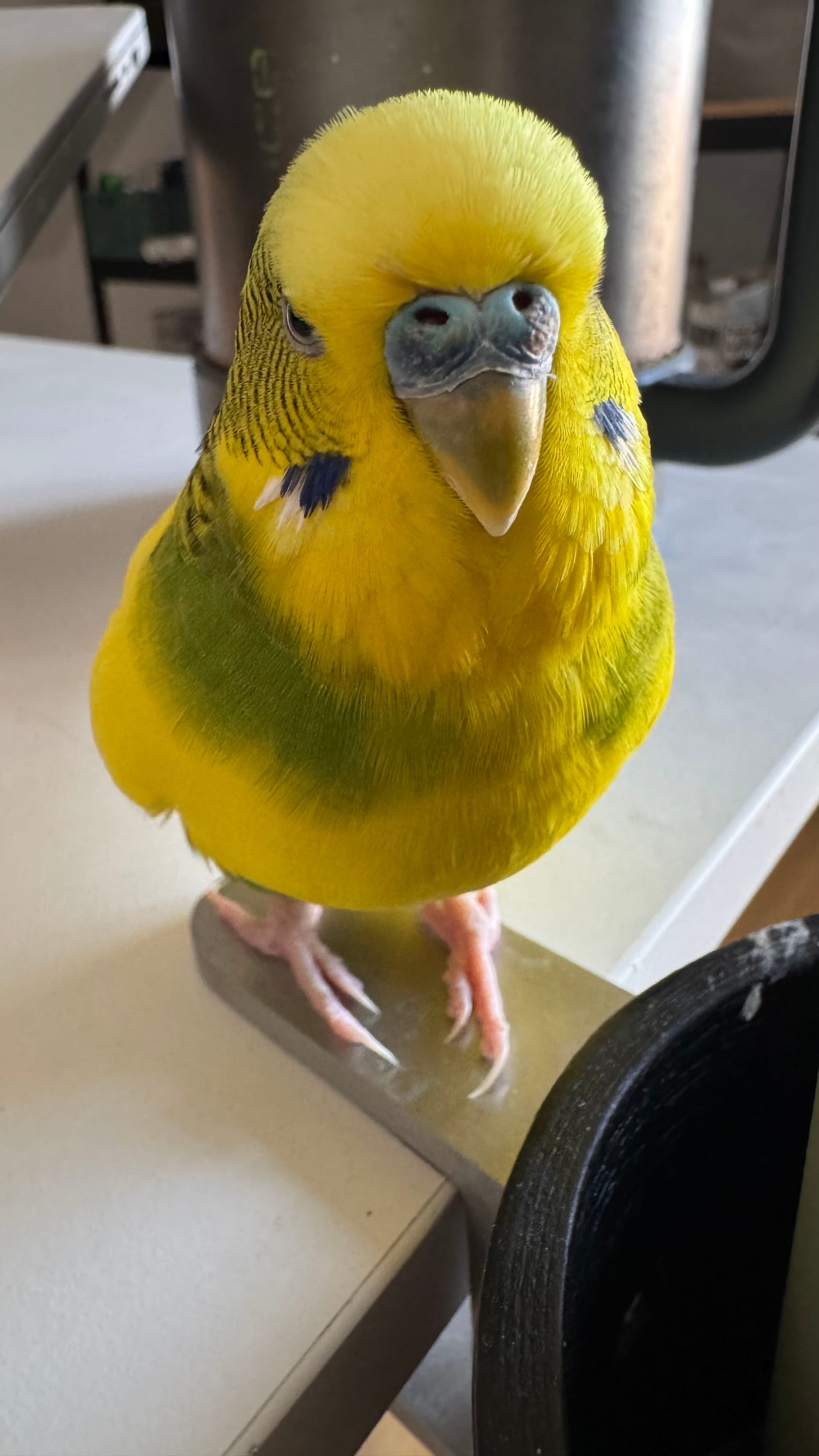
Baden’s cere has fully returned to its original bright blue color. He also became noticeably more active —and resumed humping behavior, which had stopped after the tumor symptoms first appeared. In my opinion, this return of sexual behavior may indicate that his hormone levels are stabilizing and that the feminizing effect of the tumor is being suppressed.
💡 FYI: What to Expect if You Go the Implant Route
| Procedure | Purpose | Cost (€) |
|---|---|---|
| Inhalation anesthesia (short) | To safely sedate the bird during the procedure | €34.94 |
| Hormone implant (Suprelorin 4.7mg) | To help suppress the tumor’s hormonal effects | €91.85 |
| Small skin suture | To close the site after inserting the implant | €28.08 |
➡️ Total for cost for the implant only: approximately €155
What I Learned
Through this entire ordeal, I’m just grateful that Baden is still healthy and doing well. I truly believe that what helped most was catching the signs early and getting him to the vet before things worsened. While I do regret not going to the vet immediately, I’m thankful that it still worked out in the end.
Baden is like a son to me, and I’ll do whatever it takes to care for him. Even though this treatment will likely be ongoing, I’m just relieved that—for now—he’s stable, active, and happy. That’s all I could ask for.
